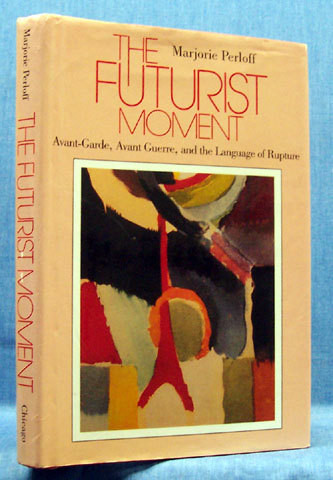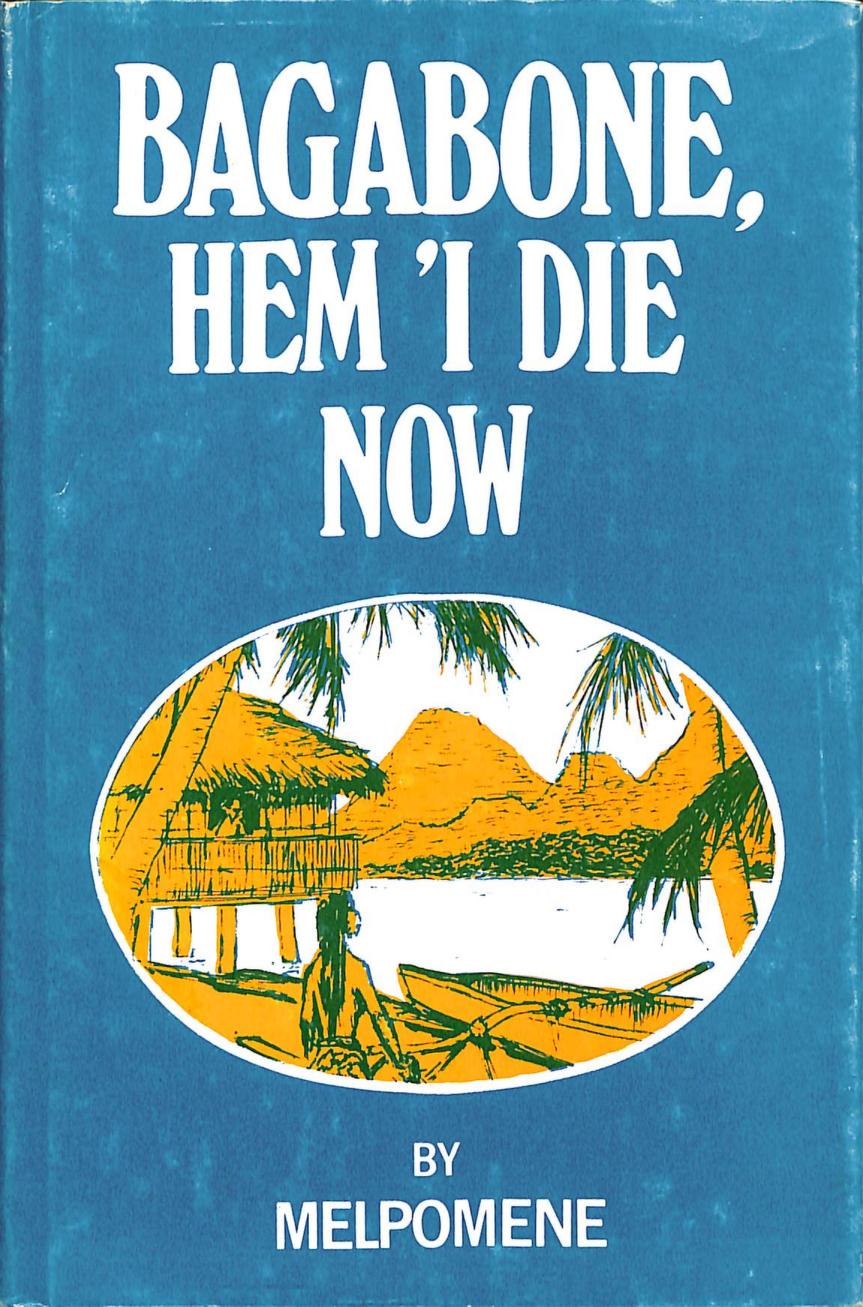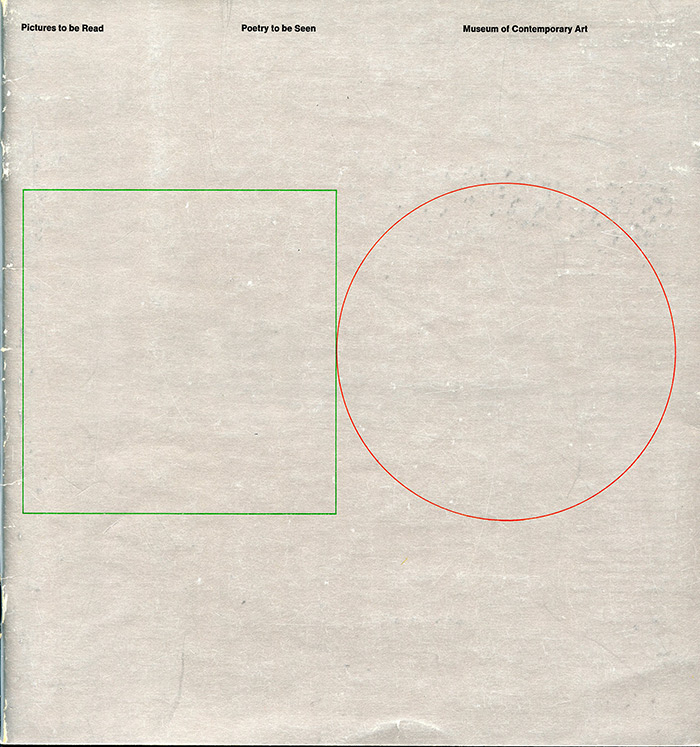Marjorie Perloff: The Futurist Moment: Avant-Garde, Avant Guerre, and the Language of Rupture (1986)
Filed under book | Tags: · futurism, history of literature, language, literary criticism, poetry

“Marjorie Perloff’s stunning book was one of the first to offer a serious and far-reaching examination of the momentous flourishing of Futurist aesthetics in the European art and literature of the early twentieth century. Offering penetrating considerations of the prose, visual art, poetry, and carefully crafted manifestos of Futurists from Russia to Italy, Perloff reveals the Moment’s impulses and operations, tracing its echoes through the years to the work of “postmodern” figures like Roland Barthes.”
Publisher University of Chicago Press, 1986
ISBN 0226657310, 9780226657318
xxiii+288 pages
Reviews: Gregory L. Ulmer (Criticism, 1988), Hank Lazer (South Atlantic Review, 1988), Timothy Materer (Journal of English and Germanic Philology, 1988), Patricia Hopkins (Rocky Mountain Review of Language and Literature, 1988), Willard Bohn (Comparative Literature, 1989), Jean-Michel Rabaté (Jacket2, 2012).
Interview with author (Harriet, 2013)
PDF (18 MB)
Comment (0)Melpomene: Bagabone, Hem ‘I Die Now (1980)
Filed under fiction | Tags: · artificial intelligence, generativity, hoax, language, linguistics, literature, text

“Bagabone, Hem ‘I Die Now (1980) is perhaps the first novel that was purportedly written by a computer.
The back flap of the dust jacket states this about the book’s origins: “Can a computer write a novel? To find out, some experts in literature, linguistics, and computers at the Institute of Science and Technology, Jagiellonian University, Krakow, programed a computer, Melpomene, with English verb patterns and semantic (i.e., meaning) units drawn from twentieth-century women writers, as well as D.H. Lawrence, James Joyce, and some ‘angry young men’ of the 1960s. Then they added some patterns and units from Pidgin English and French, and the astounding result is Bagabone, Hem ‘I Die Now. Melpomene, which is the name of the Greek muse of tragedy, picked the title; translated from Pidgin English, it means, ‘Bagabone (a character in the novel) is dying.'”
Following its publication, Computer World published an article (“Publisher Claims Computer Composed Novel”, 25 Aug. 1980, p. 23) effectively defeating the publisher’s claim about the work’s computational origins. In the article, AI experts deem the novel to be human-written, and another source reports that there is no ‘Institute of Science and Technology’ at Jagiellonian University. Moreover, due to its mode of operation, the publisher (Vantage Press) would apparently have been paid to print the book. The copyright holder for Bagabone was a human—an Englishman named G.E. Hughes—who could not be reached by Computer World. (Intriguingly, this copy of the book is inscribed by one ‘Eric Hughes’, though this could be coincidental.)”
Publisher Vantage Press, New York, 1980
ISBN 0533042496, 9780533042494
136 pages
via James Ryan (xfoml)
Commentary: Peter Swirski (2013), James Ryan (2017), Joanna J Bryson (2018).
PDF (40 MB)
Internet Archive
Pictures to be Read, Poetry to be Seen (1967)
Filed under catalogue | Tags: · art, fluxus, language

“Both an inaugural event in the foundation of the Museum of Contemporary Art Chicago, and as an early marker of its experimental ethos, the MCA’s first formal gallery exhibition, Pictures to be Read/Poetry to be Seen, brought together artists who probed the permeable spaces between pictorial images, linguistic representation, artistic practice and lived experience. As a guiding, yet loose, theme for the exhibition, founding director Jan van der Marck chose works that attempted to break down the medium-specificity of traditional artistic categories. In many instances, this was achieved through a conflation of various codes and signifiers from different modes of linguistic and visual production (like poetics, graphic design, and performance) and the modes of perception they supposedly required (such as reading, seeing and participation).”
Pictures to be Read/Poetry to be Seen featured 71 works created between 1961–67 by artists, including Shusaku Arakawa, Giafranco Baruchello, Mary Bauermeister, George Brecht, Oyvind Fahlström, Ray Johnson, Allan Kaprow, R. B. Kitaj, Alison Knowles, Jim Nutt, Gianni-Emilio Simonetti, and Wolf Vostell.
Curated, with an introductory essay and notes on the artists, by Jan van der Marck
Publisher Museum of Contemporary Art, Chicago, 1967
[33] pages
via laboratoirefig.fr
PDF (4 MB)
Comment (0)
